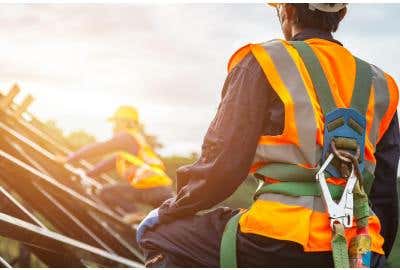Hazard Recognition


No matter what industry you are in, protecting the physical safety and health of workers is paramount. Too many job-related injuries and health problems are due to a lack of recognition of hazardous conditions. Discover what you and your team members should be aware of with this list of common workplace hazards.
Common Injury and Health Hazards in the Workplace
Physical injury and illness related workplace hazards can be different for every industry, but some of the most common hazards fall under the following categories:
- Slip, trip, and fall
To prevent slips, trips, and falls, you’ll want to identify obstructions, clutter, damaged surfaces, slippery surfaces, and elevated platforms or floors with open sides. - Electrical
Electrical hazards can include blocked or unlabeled electrical panels, damaged power cords, daisy-chained power strips, or the permanent use of extension cords in lieu of installation of an appropriately placed outlet. - Equipment operation and maintenance
Inadequate machine guards or guarding devices on equipment can cause serious injury, similar to those which occur through improper lockout and tagout procedures. - Work practices
Unsafe actions, such as improper lifting and tool use as well as not wearing adequate safety personal protective equipment are important factors that can cause workplace injury.
- Chemical and gas handling and storage
The improper storage and labeling of hazardous chemicals and gases can cause serious injury, long-term illness, and death. Employers must have Safety Data Sheets (SDSs) available to employees at all times.
- Ergonomics
Repetitive or overly forceful motions or workstations that induce poor posture can lead to overexertion injuries and cumulative conditions, such as carpal tunnel and tendonitis. It’s important to review your workspace and practices to prevent these kinds of muscular injuries.
- Environmental Hazards
Environmental hazards form a broad category that includes airborne considerations, such as exhaust fumes and chemical vapors, as well as contaminants and chemicals that may be ingested or absorbed through the skin. Environmental hazards can also include unsafe noise levels and exposure to radiation and biological materials.
Industry knowledge, experience, and awareness of your surroundings are good tools to begin ensuring a safe workplace. In addition, knowing and understanding OSHA guidelines is a crucial part of safety and compliance.
Keep Your Workplace Safe ClickSafety Courses aimed to improve Hazard Recognition
The list of potential hazards in the workplace is seemingly endless. The best way to keep workers safe is to be aware of the OSHA regulations and to train employees in safe work practices. ClickSafety offers safety training courses and course packages designed to keep workers, supervisors, managers, and foremen safe in a wide range of industries. Some of the ClickSafety’s most popular courses include:
- Fall Protection Awareness Safety Pack
- PPE Safety Pack
- Hazard Communication for Managers and Supervisors
- Introduction to OSHA
These courses will train management, supervisors and workers to recognize hazardous conditions to prevent injuries and stay safe and healthy while on the job.

